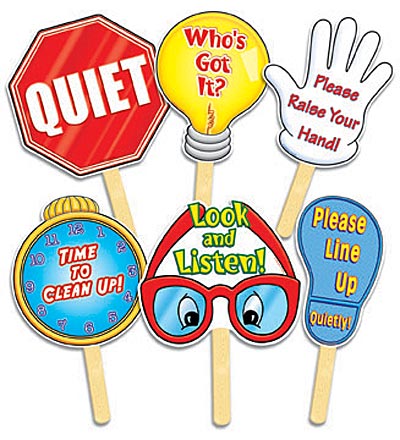Classroom management is a term used by several teachers to illustrate the process of ensuring that classroom lessons run smoothly despite disruptive behavior by students. The term also implicates the prevention of disruptive behavior.
It is probably the most challenging factor of teaching for many teachers and indeed experiencing problems in this area causes some to leave teaching altogether.
It is closely related to issues of encouragement, discipline and respect. A large part of traditional classroom management includes behavior modification; that is, establishing rules and procedures at the beginning of the school year. It also involves being consistent in enforcing these rules and procedures. There needs to be positive consequences when rules are followed, and negative consequences when rules are broken. There are newer perspectives on classroom management that are more holistic and comprehensive. One example is affirmation teaching, which guides students toward success in helping them see how their effort pays off in the classroom. Affirmation teaching avoids traditional threats, bribery, or persuasion, and relies instead upon making an environment where students are successful as a result of their own efforts (studying for an examination, for example).
Methods
- Delaney Cards
One method of classroom management is the Delaney Card. This small card was used widely in the New York Metropolitan region in the 60s and 70s. It is still in use by a small number of teachers. - Tools for Teaching
Tools for Teaching is a classroom management method made and taught by Fred Jones (educator) on speaking tours and in the eponymous book series Tools for Teaching.
Positive Classrooms developed by “Dr. Bob” DiGiulio (educator) sees positive classroom management as the result of four factors: how teachers regard their students (spiritual dimension), how they set up the classroom environment (physical dimension), how skillfully they teach content (instructional dimension), and how well they address student behavior (managerial dimension).
Block scheduling
Block scheduling is a type of academic scheduling in which each student has lesser classes per day for a longer period of time. This results in more time for teaching due to less time wasted due to class switching and preparation. Conversion to block scheduling became a widespread trend in United States schools in the 1990s. Prior to that, many schools scheduled classes such that a student saw every one of his teachers each day. Classes were approximately 50 minutes long, but under block scheduling, they became approximately 90 minutes long. Many benefits and drawbacks to this alternate method were and are debated.
The exact method used varies greatly between schools
Communication
Good Communication makes for good classroom management.
There are categories of communication
Sending Skills
– Deal is present. Information is most helpful when used at earliest opportunity.
– Talk directly to students, not about them. This shows respect for the student and helps them to obtain information about adults’ feelings.
– Speak politely. This helps make positive role models in the eyes of the students.
Take responsibility by using the personal pronoun ‘I’. Ex: I feel my teachings aren’t getting through to you
– Make statements, not questions. Questions create defensiveness among students.
Receiving Skills
– Forceful, non evaluative listening should be used to help the speaker feel their comments expressed are acceptable and clearly heard.
– Use paraphrasing, active listening or reflecting to make the speaker feel heard. It also helps the listener become engaged in the conversation
– Make eye contact.
– Suggest strong leadership skills through body carriage, facial expressions & gestures.
